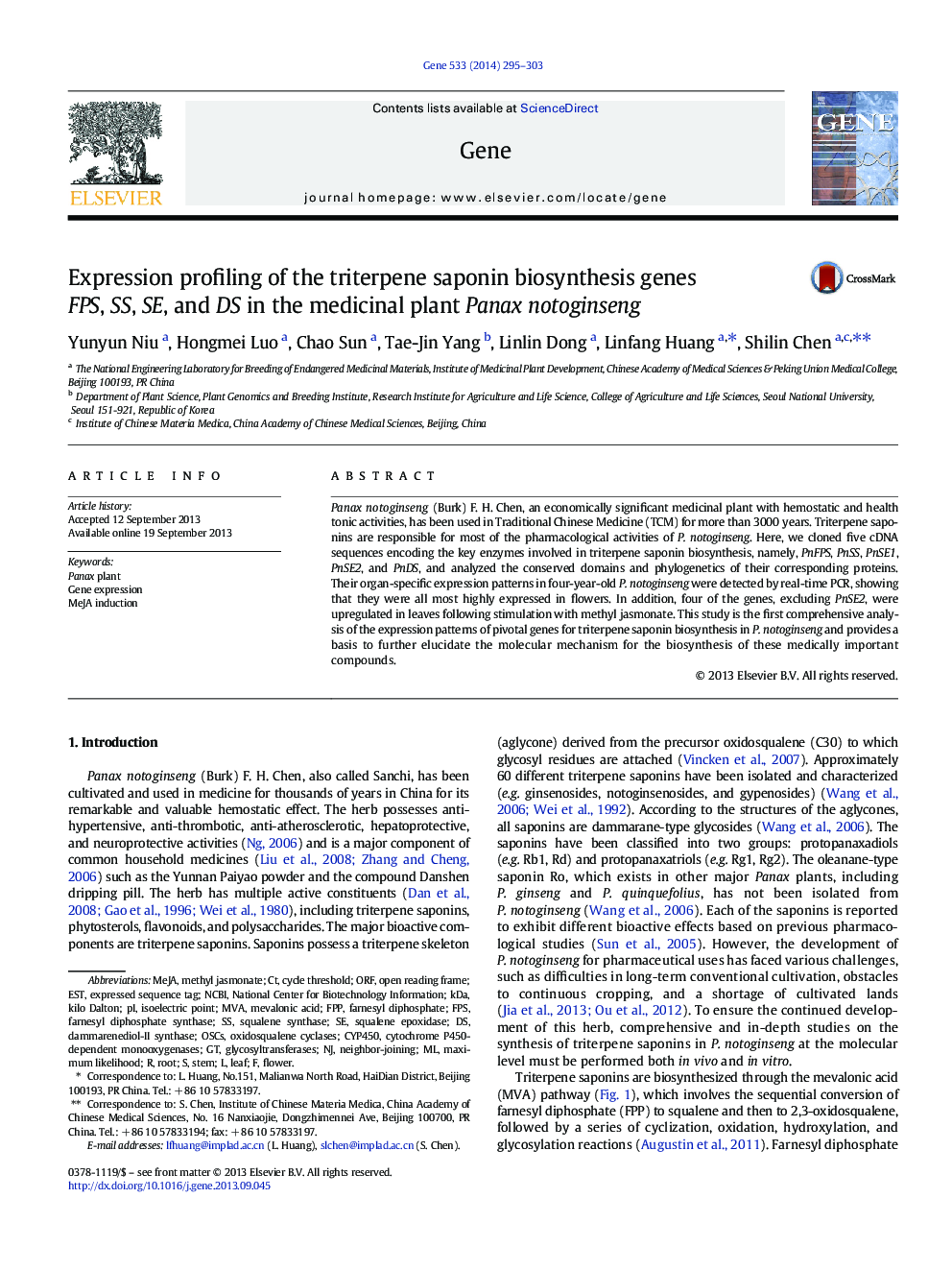| Article ID | Journal | Published Year | Pages | File Type |
|---|---|---|---|---|
| 2816736 | Gene | 2014 | 9 Pages |
•PnFPS, PnSS, PnSEs, and PnDS were most highly expressed in P. notoginseng flowers.•The expression of PnFPS and PnDS was visibly increased at 6 h after MeJA treatment.•PnSE1 was induced at 24 h after MeJA treatment, whereas PnSE2 was not induced.
Panax notoginseng (Burk) F. H. Chen, an economically significant medicinal plant with hemostatic and health tonic activities, has been used in Traditional Chinese Medicine (TCM) for more than 3000 years. Triterpene saponins are responsible for most of the pharmacological activities of P. notoginseng. Here, we cloned five cDNA sequences encoding the key enzymes involved in triterpene saponin biosynthesis, namely, PnFPS, PnSS, PnSE1, PnSE2, and PnDS, and analyzed the conserved domains and phylogenetics of their corresponding proteins. Their organ-specific expression patterns in four-year-old P. notoginseng were detected by real-time PCR, showing that they were all most highly expressed in flowers. In addition, four of the genes, excluding PnSE2, were upregulated in leaves following stimulation with methyl jasmonate. This study is the first comprehensive analysis of the expression patterns of pivotal genes for triterpene saponin biosynthesis in P. notoginseng and provides a basis to further elucidate the molecular mechanism for the biosynthesis of these medically important compounds.
